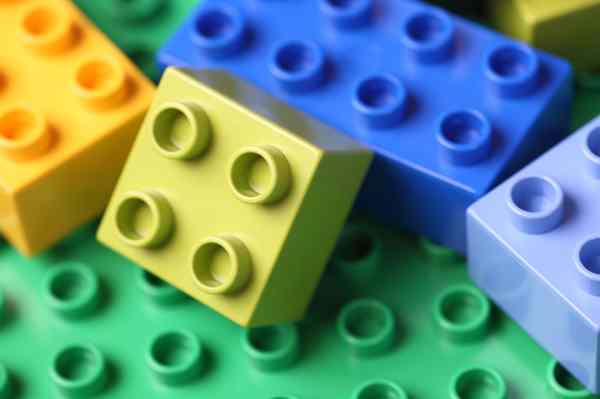When I was a child it seemed that gratitude was something I was expected to display. I learned to mimic the desired behaviour, but I didn’t really understand gratitude or being thankful. I understood pleasure, and being glad that something had happened, or that I had received something, but the feeling I now associate with gratitude, a sense of heart-opening warmth and grace, wasn’t part of it.
My mother asked us to write thank you notes for presents within two weeks of receiving them. Sooner was better. So we wrote to distant Aunts and Uncles thanking them for presents that we weren’t sure we wanted: socks, handkerchiefs, soap. While faraway family appreciated the effort, the notes were bland and formulaic. Thank you for X. I like it very much. I hope you are enjoying (season or holiday), XXOOXX. As a teenager I moved to simple declarations: Great! Wow! Awesome! These exclamations were added to greeting card notes with some sentiment already printed. I faked gratitude in order to meet a social need.
When I began to work I was surprised by how much a thoughtful thank you from my boss or a co-worker influenced how I felt. I began to appreciate small kindnesses. The person who remembers to tell you where everyone is going for lunch. The person who remembers the type of pen you like when they order supplies. The person who helps you empty waste baskets on Friday afternoon so you can leave earlier for a date.
“Thank you” began to be a more genuine, more personal response, but understanding didn’t begin to develop until my early twenties.
Things that helped me learn gratitude:
- Having little money
When I was on my own and unemployed for the first time in my early twenties I had very little money once I paid rent. Food was the highlight of the day and I enjoyed my meagre meals far more than I had when I never worried about when my next one might appear. I am not suggesting lack of money is good, just noting the way it increased my awareness and appreciation of food.
- David Mekelburg’s Lettering and Layout Class, the camera square exercise
David’s class at Immaculate Heart College changed the way I looked at everything. The exercise that taught me the most asked us to take a cardboard square about 10 x 10 and cut a one inch square in the centre of it using an exacto knife. The first time we used it we went to a tire store with the assignment, “come back with a list of 100 beautiful things.” We found something we responded to and then examined it through our one inch lens. We also made collages using the square to see parts of pictures and lettering layouts. Revelation! So much beauty right in front of us that had been overlooked, dismissed, unappreciated.
- Learning to cook
I’d been given a Joy of Cooking when first married and it helped me through those first traumatic meals, but I didn’t become a cook until I my brother and his wife gave me Mollie Katzen’s Moosewood Cookbook over a decade later. The exuberant dishes were easy, delicious comfort food, and brought the author’s love for her ingredients into my kitchen. I began to cook with what what was fresh, local and available and I began to thank my food and the farmers who grew it.
- Being a stranger
When I left Vancouver for the Okanagan in B.C. ‘s Interior, I only knew two people there: my boyfriend and my best friend’s best friend from high school. The generosity and welcome of my friend’s friend was like heat in winter. It provided the warmth needed for life to take hold in a new environment.
- Reading A Life of One’s Own
This book introduced me to keeping a journal. The author realized she had everything in her life to make her happy yet was more often discontented. What was going on? She began to look for moments when she felt happy and wrote them down. The simplicity of the question appealed to me and I began to write about when I was happy. Doing this helped me find out more about who I really was; this turned out to be quite different from both who I thought I was and who I thought I should be. It also made me appreciate when I was happy and what seemed to cause being in that state. Often I was happy because I read something wonderful or because I’d had a chance to appreciate some natural aspect of the day, or I’d had an engaging conversation. Gratitude for those moments of happiness began to arise. Gratitude started to show up without being called.
- Suggesting books
I love books and love sharing them. I find myself suggesting a book and learning more about it in the process. When I’ve had a good experience with a book, I want to pass that along, and find myself thanking the writer for my own pleasure and for producing something that it is a pleasure to share.
- Meditation Practice
When I began to practice the hardest thing to do was simply sit on my cushion. Again and again I’d catch myself straining to reach the next moment, the next breath; missing the present moment, present breath. When I could just sit on the cushion the world began to open, one breath at a time. I began to be thankful for each breath and marvel at the recurring wonder of it. From that place of gratitude, my experience of the world began to change.
- Friends
Through meditation a deeper appreciation of friendship developed and a new way of thinking about it. When I was young my family moved frequently so I had attended ten schools by the time I entered high school. I developed some friendships that survived some of the moves, but learned to be happy reading and playing on my own except for school lunch times when it seemed critical to be part of a group. My earliest definition of friendship was tied to reading (those who liked books I liked) and solidarity (people willing to eat lunch or play with me). I was grateful to find them. There was a hint of desperation in my gratitude though and it wasn’t until I encountered meditation many years later that my definition of friendship evolved.
In Buddhist practice I learned about the spiritual friend, the Kalyāṇa-mita, the one that shares ethical values and supports practice as a way to attain enlightenment. Later, from John O’Donohue, I learned about the Anam Cara, an Irish term meaning soul friend. The sense of blessing that comes from relationship with a soul friend has enlarged my heart and gratitude.
- Family
As a child and young woman I was more aware of what I felt was missing from my family. It wasn’t until my mid-thirties, after therapy and years of meditation practice, that I began to appreciate my family. I finished grieving what I missed and began to realize what was there. As my child’s eye view of my parents dissolved I marveled at what they had been able to accomplish and all they had sacrificed to be able to give us what they did. I woke up to my good fortune in being born in North America to a mother and a father who wanted children, loved them, loved each other, believed in education, believed their children could be what they wanted to be, and taught them that each person is accountable for his or her actions. Gratitude for their faith in me abides.
- Teachers
I had a remarkable group of teachers in high school. The faculty who taught senior students, led by John Sage, put together an honors seminar and introduced us to multidisciplinary perspectives and many of the skills we would need for college work. The use of questions, research into primary sources, dialogue in a seminar setting, and work to hone both our listening and reading skills were presented at just the right time. It was challenging, exciting, thrilling learning, and set the bar extremely high for other academic experience.
At Immaculate Heart College I encountered a group of passionate teachers at a time of great change. The faculty had just moved from being a small catholic women’s college to one informed by the values of Vatican II. In the process they had become co-educational, open and adventurous. To give you a sense of the rich dialogue on campus Dorothy D. Lee taught Cultural Anthropology, Tom Hayden, Political Science, Carl Rodgers, Psychology and Corita Kent was the Chair of the Art Department for many years. I took David Mekelburg’s Lettering and Design course there. This poem by Sr. Helen Kelley, who was President of Immaculate Heart, may give you a sense of the call that infused classes regardless of the subject.
Choose Life
only that and always,
and at whatever risk.
To let life leak out,
to let it wear away by the mere passage of time,
to withhold giving it and spreading it,
is to choose nothing.
Sister Helen Kelley
I was at Immaculate Heart for two years. The generosity and spirit of the college gave me my first taste of joyous gratitude. It also opened me to learning from another kind of teacher. Teachers who teach what can’t be learned from a book or a lecture. Teachers who are the lesson.
Gratitude flows like a river fed by many streams when I reflect on my teachers. I hope to celebrate more of them in a future post.
Gratitude is an ongoing practice. Reflecting on what you are grateful for and how you have learned to be grateful moistens the heart.
Join the discussion: How have you learned gratitude?




